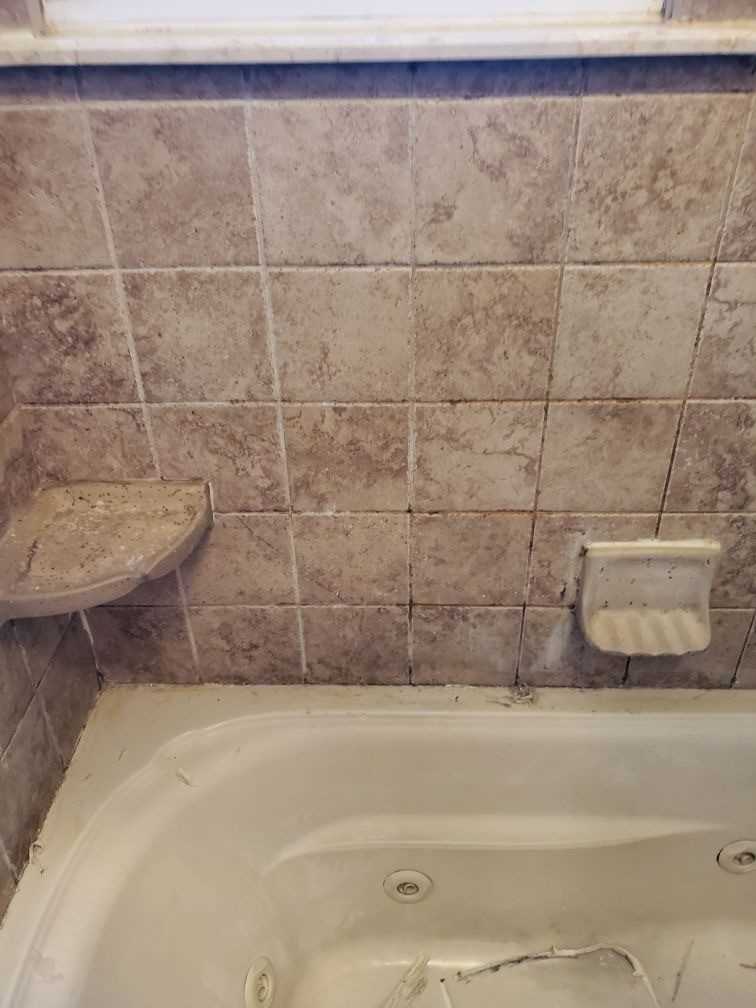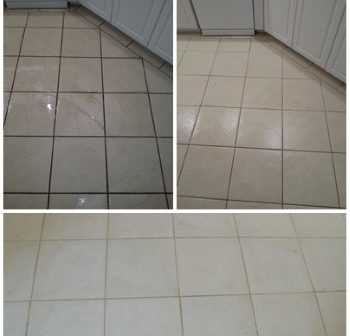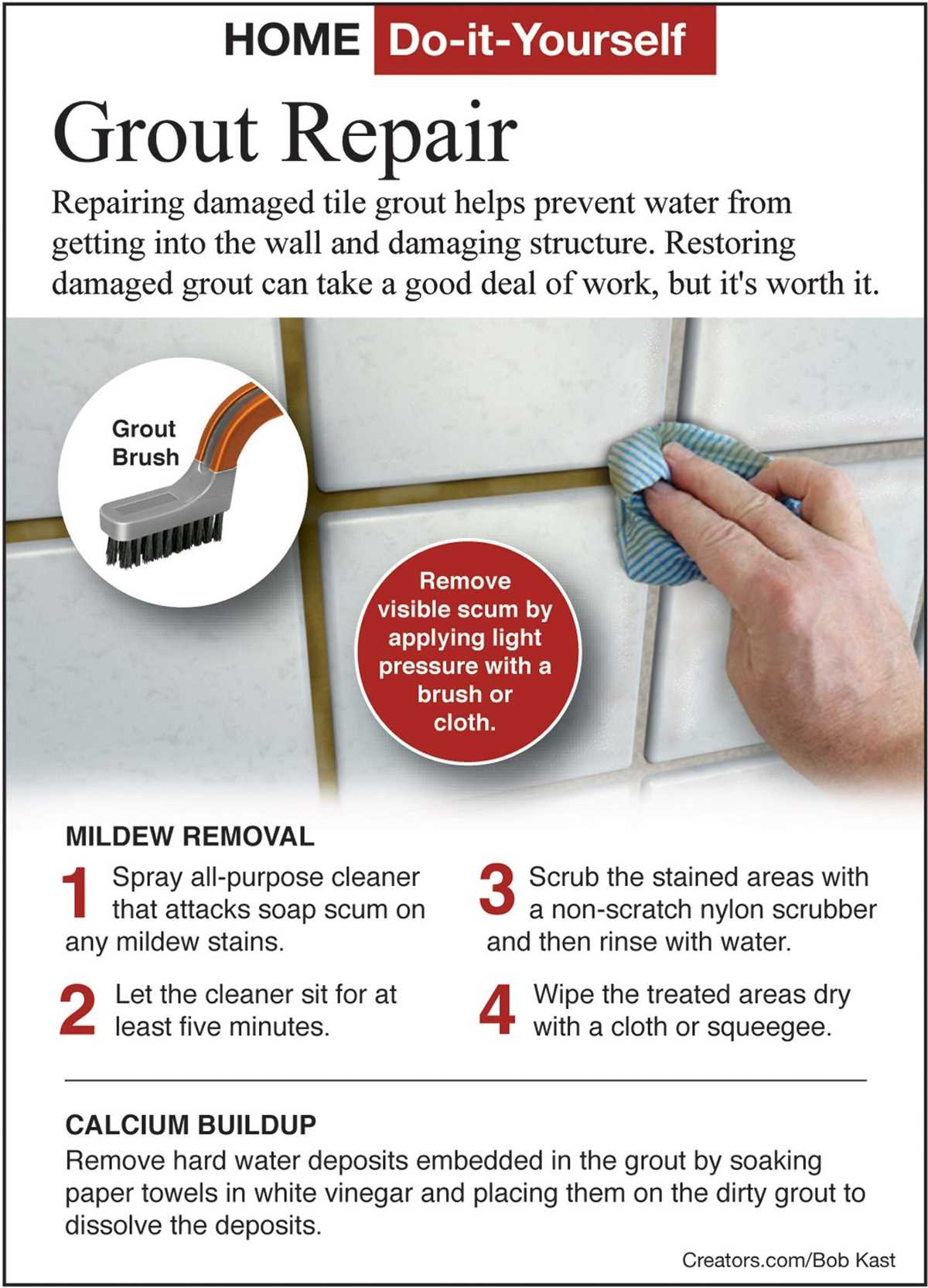




Bleach is a common household cleaning product that many people turn to when they want a reliable and effective way to remove stains and bacteria from various surfaces. However, one question that often arises is whether bleach can harm grout. Grout is the material that fills in the gaps between tiles, and it is prone to staining and discoloration over time.
When it comes to using bleach on grout, the answer is not as simple as yes or no. While bleach can be an effective cleaner for grout, it can also have negative effects if not used properly. One of the key reasons why bleach can be harmful to grout is its high alkaline pH level. This high pH level can weaken the grout over time, leading to crumbling and deterioration.
It is important to note that using bleach on grout should be done with caution and in moderation.
In addition to weakening the grout, bleach can also cause discoloration. Bleach contains chemicals that can bleach or lighten the color of grout, especially if it is colored grout. This can result in an uneven appearance and make the grout stand out in an undesirable way.
Another factor to consider is the potential damage that bleach can cause to surrounding areas. Bleach is known for its strong and powerful properties, which means that it can easily spread and affect other materials like carpets or fabrics. It is essential to take precautions and protect surrounding surfaces when using bleach on grout.
Overall, while bleach can be a useful tool for cleaning grout, it is important to use it cautiously and with proper care. Considering its potential to weaken grout, cause discoloration, and damage surrounding areas, it is advisable to explore alternative cleaning methods or consult professionals for advice on the best way to clean and maintain grout without causing harm.
Does Bleach Harm Grout? Understanding the Effects of Bleach on Grout

Many homeowners use bleach as a cleaning agent for various surfaces in their homes, including grout. Grout, a mixture of cement, sand, and water, is commonly used to fill the gaps between tiles and provide structural support. However, bleach can have negative effects on grout, including discoloration, weakening, and deterioration.
Discoloration
One of the most common effects of bleach on grout is discoloration. Bleach contains chemicals, such as chlorine, that can bleach or lighten the color of grout. This can result in an uneven appearance, with patches of discolored grout alongside the original color. The discoloration may be more noticeable in grout that is porous or has not been sealed.
Weakening
Bleach can also weaken grout over time. The chemical properties of bleach can break down the bonds within the grout, causing it to become brittle and crumble. This weakening can lead to cracks and gaps in the grout, allowing moisture and dirt to penetrate the surface. As a result, the tiles may become loose and the overall integrity of the installation may be compromised.
Deterioration
Continuous use of bleach on grout can eventually lead to its deterioration. The harsh chemicals in bleach can erode the grout, causing it to break down and disintegrate. This can result in the need for grout repair or even complete re-grouting of the tiled area. It is important to note that bleach may have a more severe impact on older or poorly installed grout.
While bleach can be effective in removing stains and disinfecting surfaces, it is important to consider the potential harm it can cause to grout. To maintain the longevity and appearance of your grout, it is recommended to use alternative cleaning methods that are less abrasive. These methods include using mild detergents, vinegar solutions, or specialized grout cleaners specifically designed for grout maintenance.
| Method | Instructions |
|---|---|
| Mild Detergent | 1. Mix mild detergent with warm water. 2. Apply the solution to the grout using a soft brush or sponge. 3. Scrub gently. 4. Rinse with clean water. |
| Vinegar Solution | 1. Mix equal parts of vinegar and water. 2. Apply the solution to the grout and let it sit for a few minutes. 3. Scrub gently with a brush or sponge. 4. Rinse with clean water. |
| Grout Cleaner | 1. Purchase a grout cleaner specifically designed for grout maintenance. 2. Follow the instructions provided on the product label. 3. Rinse with clean water. |
By using these alternative cleaning methods, you can effectively clean grout without risking the harm that bleach can cause. It is always recommended to test any cleaning solution on a small, inconspicuous area of grout before proceeding with the entire tiled surface.
Remember, proper care and maintenance of grout can help extend its lifespan and keep your tiled surfaces looking clean and beautiful for years to come.
The Importance of Grout Maintenance
Preventing Damage
Regular grout maintenance is crucial for preventing damage and ensuring the longevity of your tiles. Grout acts as a protective barrier between tiles, preventing water and dirt from seeping in and causing damage. Without proper maintenance, grout can deteriorate over time, leading to loose and cracked tiles.
Preserving Appearance
Grout maintenance also plays a significant role in preserving the appearance of your tiled surfaces. Over time, grout can become discolored and stained due to dirt, spills, and bacteria. Regular cleaning and sealing can help to maintain the original color and aesthetic appeal of your grout, enhancing the overall look of your tiles.
Preventing Mold and Mildew
Proper grout maintenance is essential for preventing the growth of mold and mildew in damp areas such as bathrooms and kitchens. When grout is not properly sealed or cleaned, it can absorb moisture and become a breeding ground for bacteria. Regular maintenance, including thorough cleaning and sealing, can help to prevent the growth of mold and mildew.
Enhancing Hygiene
Keeping your grout clean and well-maintained is important for maintaining a hygienic environment, especially in areas where bacteria and dirt can accumulate. Regular cleaning and sealing can help to remove bacteria and allergens, promoting a healthier living space for you and your family.
Increasing Longevity
By regularly maintaining your grout, you can increase the longevity of your tiled surfaces. Proper cleaning and sealing can prevent cracks and damage, ensuring that your tiles stay in good condition for years to come. This can save you from expensive repairs and replacements in the future.
Conclusion
Grout maintenance is a vital part of keeping your tiled surfaces looking their best and ensuring their long-term durability. Regular cleaning, sealing, and proper care can prevent damage, preserve appearance, prevent mold and mildew growth, enhance hygiene, and increase the overall longevity of your tiles.
Common Misconceptions About Using Bleach on Grout
There are many misconceptions surrounding the use of bleach on grout. While bleach can be a powerful cleaner, it is important to understand its limitations and potential drawbacks. Here are some common misconceptions about using bleach on grout:
Bleach is a miracle cleaner for grout
While bleach can be effective at cleaning and disinfecting grout, it is not a miracle cleaner. Bleach is primarily a whitening agent and can help remove stains, but it may not be able to remove deep-set dirt or grime. It is also important to note that bleach can weaken and damage grout over time, especially if used excessively.
Bleach can solve all grout problems

While bleach can help remove stains and brighten grout, it may not be able to solve all grout problems. If your grout is cracked, crumbling, or discolored beyond repair, bleach alone may not be enough to fix the issue. In some cases, you may need to regrout or consider other grout repair solutions.
Bleach is safe to use on all types of grout

Not all grout is created equal, and not all types of grout are safe to use with bleach. Bleach can discolor or damage certain types of grout, especially if it is colored or made from natural materials like marble or stone. It is important to check with the manufacturer or a professional before using bleach on your specific type of grout.
More bleach means better results
Using more bleach does not necessarily mean better results. In fact, using too much bleach can be harmful to both your grout and your health. Bleach is a corrosive chemical and should always be used in a well-ventilated area and with caution. Follow the instructions on the bleach bottle and never mix bleach with other cleaning agents.
Bleach is the only option for cleaning grout
While bleach can be a useful tool in cleaning grout, it is not the only option. There are many alternative cleaners and methods that can be effective at removing grout stains and dirt. For example, a mixture of baking soda and vinegar can create a powerful grout cleaner without the harsh chemicals. It is always a good idea to explore different cleaning methods to find what works best for your grout.
The Negative Effects of Bleach on Grout
Bleach is a common household cleaning product that is often used to remove stains and disinfect surfaces. However, when it comes to grout, bleach can have negative effects that can cause damage over time.
1. Discoloration
One of the main negative effects of bleach on grout is discoloration. Bleach is a powerful chemical that can remove the color from grout, leaving it faded and dull. This can be particularly noticeable in areas where bleach is used frequently, such as bathrooms and kitchens.
2. Weakening
Bleach can also weaken grout over time. The harsh chemicals in bleach can break down the grout, causing it to become brittle and more prone to cracking. This can lead to water damage and further deterioration of the grout.
3. Erosion
Another negative effect of bleach on grout is erosion. Bleach can eat away at the grout, causing it to erode and deteriorate. This can result in gaps and holes in the grout, which can lead to water leakage and damage to the underlying surfaces.
4. Staining
While bleach is often used to remove stains, it can also cause staining on grout. This is particularly true for colored grout, as bleach can remove or alter the pigment, leaving behind discolored spots or streaks.
5. Harsh Chemicals
Bleach contains harsh chemicals that can be harmful to both humans and the environment. When using bleach on grout, it is important to properly ventilate the area and avoid contact with the skin or eyes. Additionally, bleach can have a negative impact on the environment when it is washed away and enters the water system.
In conclusion, while bleach may be effective for cleaning certain surfaces, it can have negative effects on grout. Discoloration, weakening, erosion, staining, and the use of harsh chemicals are all potential risks when using bleach on grout. It is important to consider alternative cleaning methods or seek professional help to maintain the integrity and appearance of your grout.
Alternative Cleaning Methods for Grout
While bleach is commonly used to clean grout, it can potentially harm the grout over time. Fortunately, there are alternative cleaning methods that can effectively clean grout without the risk of damaging it. Here are a few options to consider:
1. Vinegar and Baking Soda
Mix equal parts of white vinegar and baking soda to create a paste-like consistency. Apply the mixture to the grout lines and scrub with a brush. Let it sit for a few minutes, then rinse with water. Vinegar has natural disinfecting properties and baking soda helps to scrub away dirt and grime.
2. Hydrogen Peroxide
Hydrogen peroxide is a powerful disinfectant and can be used to clean grout effectively. Simply pour undiluted hydrogen peroxide onto the grout lines and let it sit for about 10 minutes. Scrub with a brush and rinse with water. Be sure to wear gloves and provide proper ventilation when using hydrogen peroxide.
3. Steam Cleaning
A steam cleaner can be an effective tool for cleaning grout. The high temperature of steam helps to break down dirt and grime without the need for harsh chemicals. Simply guide the steam cleaner along the grout lines and let the steam do the work. Be sure to follow the manufacturer’s instructions for safe and effective use.
4. Oxygen Bleach
Oxygen bleach, also known as eco-friendly bleach, can be a safer alternative to chlorine bleach. Mix the oxygen bleach powder with water to create a cleaning solution. Apply the solution to the grout lines and let it sit for about 15 minutes. Scrub with a brush and rinse with water. Oxygen bleach is less likely to cause damage to the grout compared to chlorine bleach.
Remember to always test any cleaning solution on a small, inconspicuous area of the grout before applying it to the entire surface. Additionally, regular maintenance and proper cleaning techniques can help prolong the lifespan of your grout.
Tips for Safely Using Bleach on Grout
Using bleach on grout can be an effective way to remove stains and brighten the appearance of your tiles. However, it is important to use bleach safely to avoid any damage or harm. Here are some tips to help you safely use bleach on grout:
1. Ventilation
When using bleach, make sure the room is well-ventilated. Open windows or use fans to circulate fresh air. This will help to prevent the fumes from becoming overpowering and harmful.
2. Protective Gear
Wear protective gear such as gloves and goggles to protect your skin and eyes from any splashes. Bleach is a strong chemical and can cause skin irritation or burns if it comes into contact with your skin. It is always better to be safe than sorry.
3. Dilute the Bleach
Never use undiluted bleach on grout. Instead, dilute it with water according to the instructions on the bleach bottle. This will help to reduce the strength of the bleach and minimize any potential damage to the grout.
4. Test a Small Area
Before applying bleach to the entire grout surface, it is wise to test it on a small, inconspicuous area. Apply a small amount of diluted bleach and let it sit for a few minutes. If there is no negative reaction, you can proceed with the rest of the grout.
5. Use a Soft-Bristled Brush

When scrubbing the grout, use a soft-bristled brush or an old toothbrush. Avoid using abrasive scrub brushes as they can scratch or damage the grout. Gently scrub in a circular motion to remove stains without causing any harm.
6. Rinse Thoroughly
After cleaning with bleach, make sure to rinse the grout thoroughly with water. This will help to remove any residual bleach and prevent damage to the grout or surrounding tiles.
7. Follow Cleaning Instructions

Always follow the cleaning instructions provided by the manufacturer of your grout and tiles. Some types of grout may be more sensitive to bleach than others, so it is important to use the proper cleaning methods to avoid any damage.
8. Consider Alternative Methods
If you are unsure about using bleach on grout or if you have sensitive grout, consider using alternative cleaning methods. There are various commercial grout cleaners available that do not contain bleach and may be safer for your specific grout.
By following these tips and using bleach safely, you can effectively clean your grout without causing harm or damage. Remember to always prioritize safety and be cautious when working with strong chemicals like bleach.
FAQ
Will bleach damage grout?
Bleach can potentially damage grout if used incorrectly or in excessive amounts. It is a strong chemical that can weaken and erode the grout over time.
How should I use bleach on grout?
If you choose to use bleach on grout, it is important to dilute it with water and apply it sparingly. Avoid leaving it on the grout for an extended period of time and rinse thoroughly after cleaning.
What are the potential effects of bleach on grout?
Bleach can cause grout to become discoloured, weakened, or even disintegrate. It can also break down the sealant applied to the grout, making it more susceptible to staining and moisture damage.
Is there an alternative to bleach for cleaning grout?
Yes, there are several alternatives to bleach for cleaning grout. These include vinegar, hydrogen peroxide, baking soda, or commercial grout cleaners specifically designed for use on grout. These alternatives are generally safer for both the grout and the person using them.
Can I use bleach on coloured grout?
It is generally not recommended to use bleach on coloured grout, as it can cause the colour to fade or discolor. Instead, it is best to use a mild cleaner specifically formulated for coloured grout.
How often should I clean grout with bleach?
Cleaning grout with bleach should be done sparingly and only when necessary. Overusing bleach can weaken the grout and cause damage. It is recommended to clean grout with bleach no more than once every few months.
What precautions should I take when using bleach on grout?
When using bleach on grout, it is important to protect your skin and eyes by wearing gloves and goggles. Make sure the area is well-ventilated and avoid mixing bleach with other cleaning chemicals, as this can produce toxic fumes.














